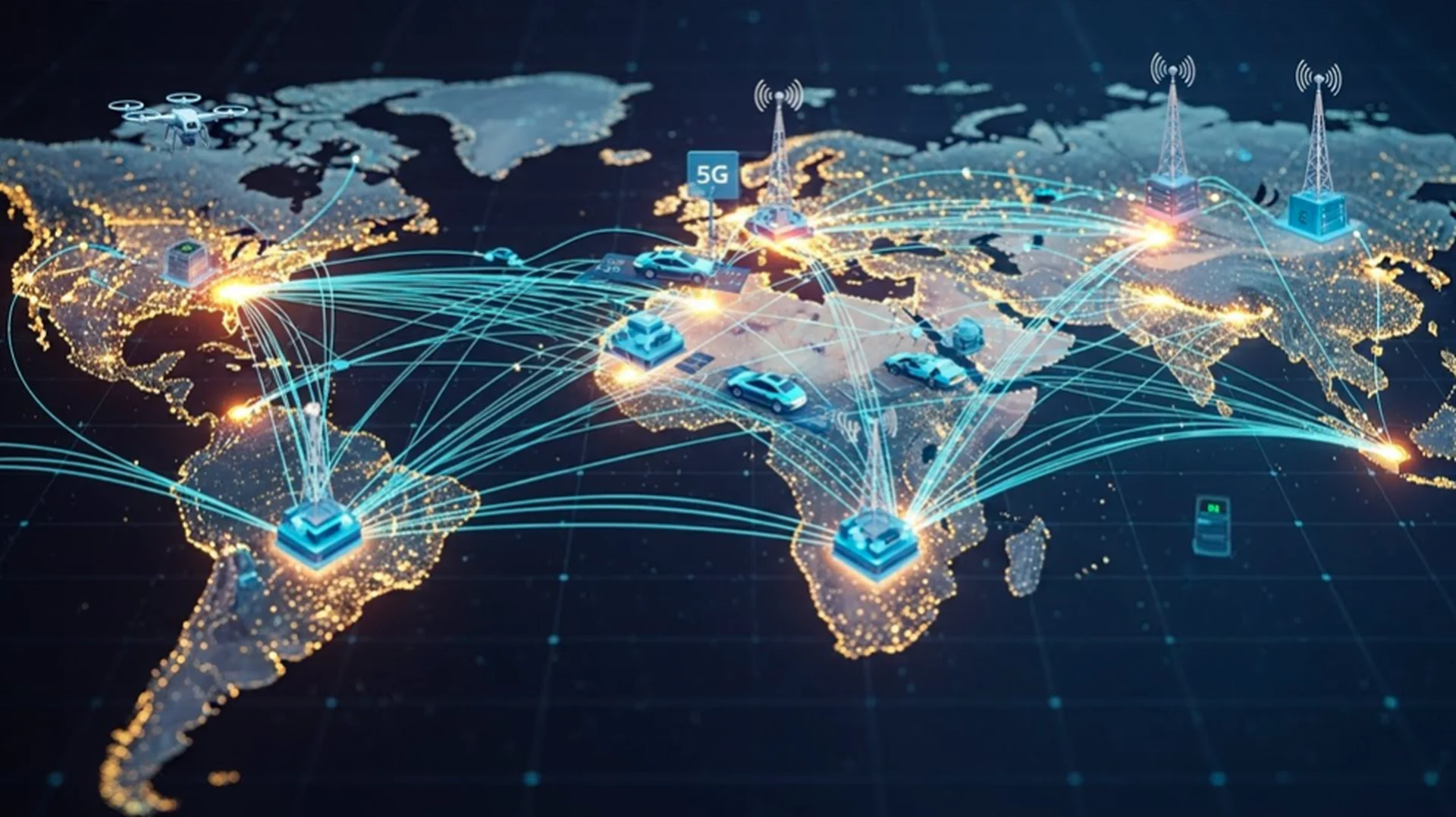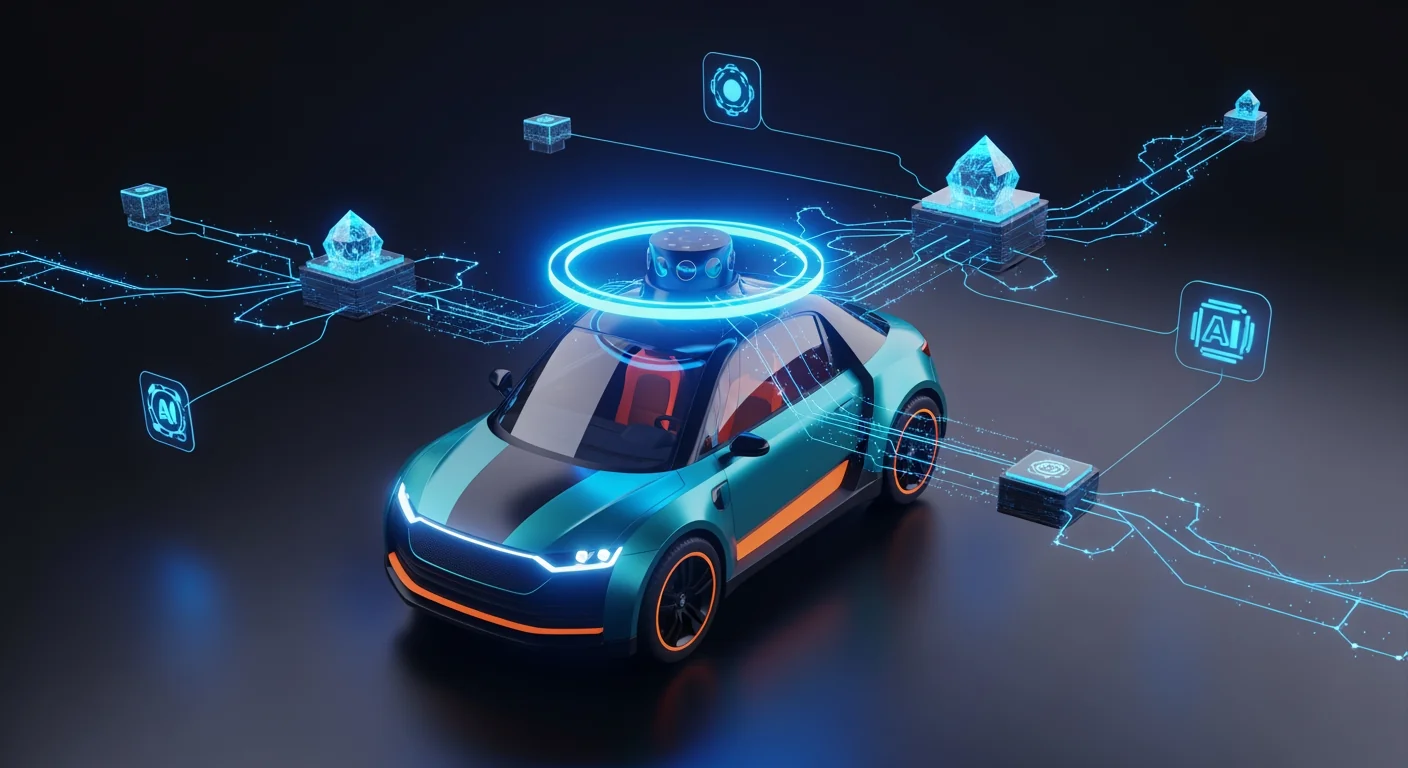
October 2025
Industrial IoT: The Intelligence Revolution Transforming Manufacturing
Welcome to TechLens™
TechLens™ is your monthly newsletter, illuminating the dynamic landscape of one of our areas of expertise. This month, we focus on industrial IoT. Crafted for technophiles and curious readers, this newsletter unveils the elegance and ambition driving our transformative sectors, highlighting our opinions on possible opportunities for growth and their estimated economic impact.
The Intelligence Revolution Is Here
Remember when connecting your coffee maker to Wi-Fi seemed futuristic? Those days feel like ancient history now. Industrial IoT isn't about connecting machines anymore—it's about creating intelligent ecosystems that think, adapt, and act in milliseconds.
Here's the reality: while your competitors are still arguing about cloud versus edge, smart money is already building hybrid architectures that process data at lightning speed, right where it matters most. This isn't theoretical anymore—it's happening on factory floors, in remote operations, and across supply chains right now.

Figure 1: Discover Types of IoT Sensors, Applications and Examples.
Bottom line: The companies that master real-time intelligence in the next 12 months will dominate their markets for the next decade.
Game Changer: Emerson's Edge Computing Powerhouse
What Happened
On October 31st, Emerson dropped the PACSystems IPC 2010, a compact industrial PC that's basically a data center you can mount on a factory wall. Think 4-core processor, expanded memory, and a build so rugged it laughs at harsh environments.
Why You Should Care
This isn't just another industrial computer. It's the difference between knowing your machine is about to fail and actually preventing that failure. Here's what makes this a watershed moment:
- 30% reduction in downtime: When you process AI and analytics at the edge, you're not waiting for cloud roundtrips. You're making split-second decisions that keep production lines running.
- Bandwidth savings that matter: Stop hemorrhaging money on cloud data transfers. Process locally, transmit strategically.
- True predictive maintenance: Not the kind that alerts you after the fact, but the kind that prevents catastrophic failures before they happen.
The Cybersecurity Wake-Up Call You Can't Ignore
Nozomi Arc: Automated Defense for the Real World
Here's an uncomfortable truth: every connected device is a potential backdoor. As industrial networks explode with IoT sensors and edge devices, the attack surface grows exponentially. On October 31st, Nozomi Networks launched Nozomi Arc, and it's the first cybersecurity solution that actually understands how industrial environments work.
This isn't your typical corporate firewall dressed up for factories. Nozomi Arc provides real-time threat detection and automated responses specifically designed for OT and IoT networks. Think of it as a security guard that never sleeps, never takes breaks, and can spot threats in milliseconds.
Reality check:
A single breach in energy or manufacturing doesn't just cost money—it halts entire production lines. The companies that survive the next wave of cyber threats are the ones investing in this level of protection today.
5G's Double-Edged Sword: Speed Meets Vulnerability
October 23rd brought us a sobering analysis: 5G is forcing manufacturers to completely rethink cybersecurity. Here's why this matters more than you think.
5G enables massive device connectivity—we're talking thousands of sensors, machines, and endpoints all communicating simultaneously. That's incredible for operational efficiency. But each connection is also a potential vulnerability.

The New Security Playbook
Smart manufacturers are pivoting to two critical strategies:
- Network segmentation: Isolate critical systems so that if one segment is compromised, it doesn't cascade across your entire operation.
- Zero-trust models: Assume every connection is potentially hostile until proven otherwise. Trust nothing, verify everything.
The cost of ignoring this? We're talking about millions in losses, regulatory nightmares, and reputational damage that can take years to recover from. The companies implementing proactive defenses now are building moats their competitors won't be able to cross.
The $7 Billion Opportunity Hiding in Plain Sight
IoT Microcontrollers: Small Chips, Massive Returns
On October 8th, IoT Analytics released a report that should make every tech investor sit up straight. The IoT microcontroller market is projected to hit $7 billion by 2030, driven primarily by industrial edge AI applications.
Let's decode what this actually means: MCUs (microcontroller units) are the tiny brains inside every smart device. As edge AI becomes standard, demand for MCUs that can handle on-device intelligence is exploding. These aren't passive sensors anymore—they're decision-making powerhouses that can analyze data, run algorithms, and trigger actions without touching the cloud.
Investment angle:
Companies producing edge-capable MCUs or building solutions around them are positioning for 15-25% annual growth. This is where smart capital is flowing.
Why Edge AI Changes Everything
- Real-time decision-making in remote or bandwidth-limited environments
- Autonomous systems that don't need constant cloud connectivity
- Dramatic productivity boosts through smarter, more responsive operations
Continue reading this premium article
Unlock exclusive industry insights available only to subscribers
Exclusive Research
Proprietary data and analysis not available anywhere else
Competitive Edge
Stay ahead with forward-thinking strategies and insights
Expert Community
Connect with industry leaders and innovative thinkers
Unlimited Access
Unlock all premium content with a subscription







